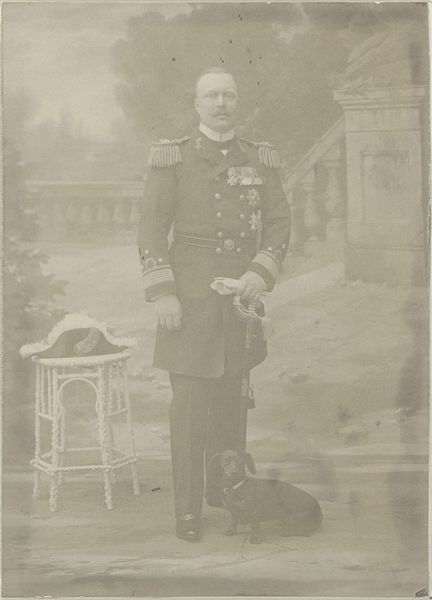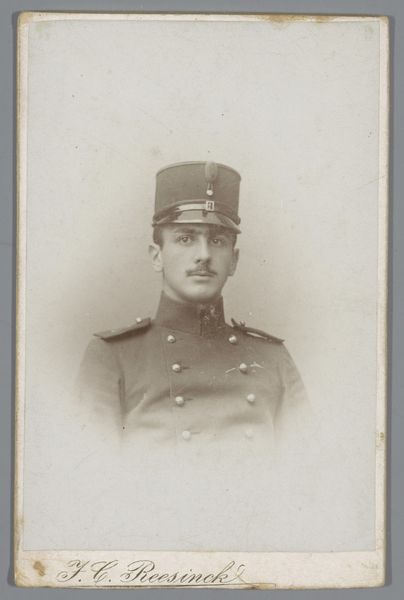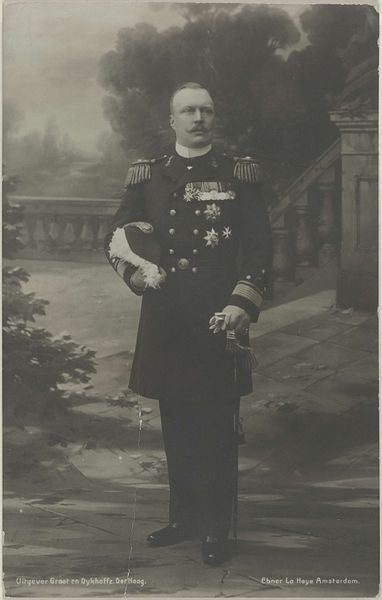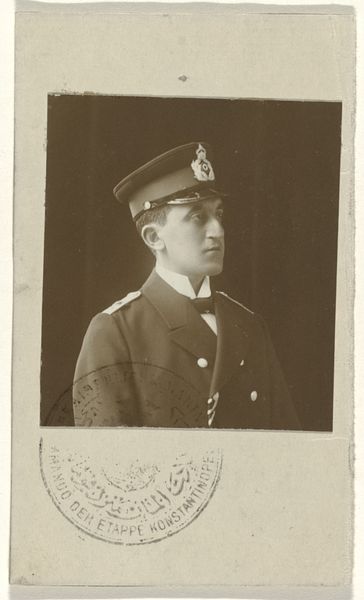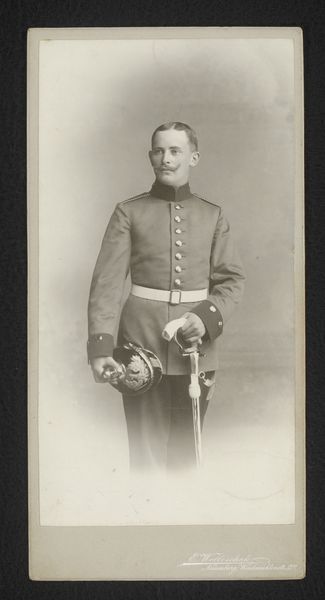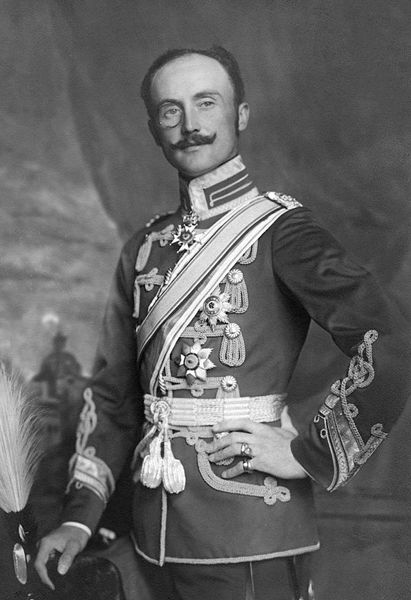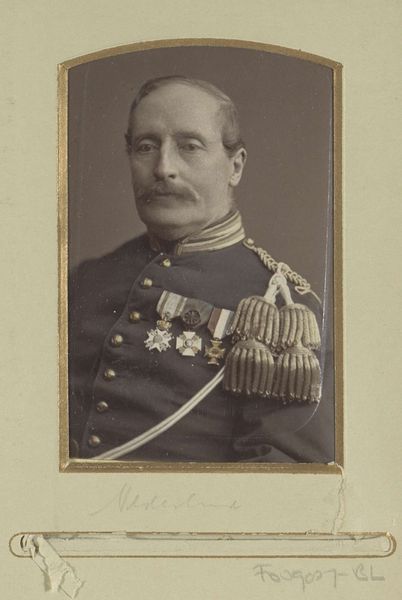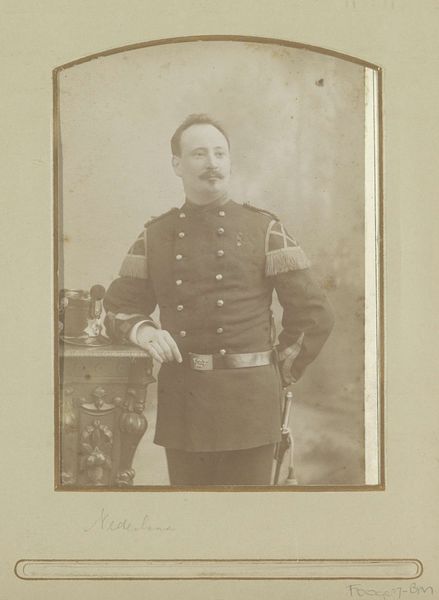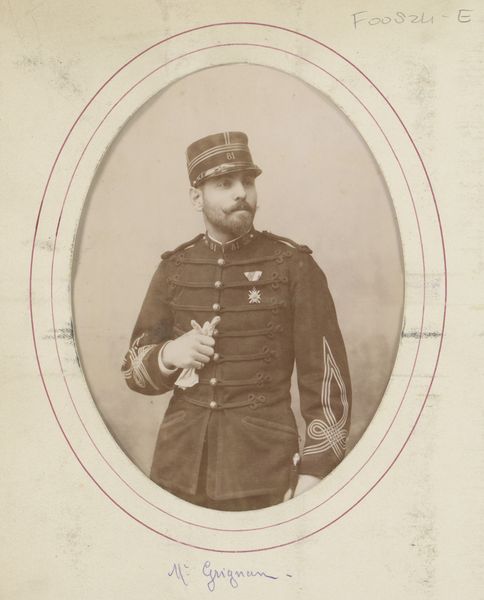
Arthur Moos in uniform van het 20e regiment Uhlanen, Ludwigsburg, 1905-1906 1905 - 1906
0:00
0:00
photography, gelatin-silver-print
#
portrait
#
portrait image
#
photography
#
historical photography
#
gelatin-silver-print
Dimensions: height 90 mm, width 60 mm
Copyright: Rijks Museum: Open Domain
Editor: Here we have a gelatin-silver print, a portrait titled *Arthur Moos in uniform van het 20e regiment Uhlanen, Ludwigsburg,* created around 1905 or 1906. There's something very stoic and formal about it; you can feel the weight of history just looking at him in that uniform. What strikes you about this photograph? Curator: What stands out is precisely that posed formality, common to portraits of the era, especially within military contexts. This wasn't just about documenting an individual; it was about projecting an image of power, duty, and belonging to a larger entity—in this case, the 20th Uhlanen Regiment. Consider how the crisp uniform, the elaborate helmet, and even the man's controlled posture contribute to this construction. How might this image have functioned in society at the time? Editor: Maybe as propaganda? Or perhaps just a memento for the family? I guess both aren't mutually exclusive. Curator: Exactly. Think about the rise of nationalism in the late 19th and early 20th centuries. Uniforms and military service became potent symbols of national pride and unity. Images like this circulated widely, reinforcing these ideologies. At the same time, you're right, it serves a personal function for remembrance. Do you think knowing it's a photograph changes how we read this image, as opposed to a painted portrait? Editor: Well, I guess there's an assumption of "truth" that comes with photography. People tend to believe photographs record reality, even though staging and posing are involved here. I mean, the reality is carefully constructed. Curator: Precisely. And that interplay between perceived reality and constructed image is where the real interest lies, especially when we consider the social and political functions this kind of portrait served. The photographic portrait democratized the representation of power but also controlled its distribution and interpretation. Editor: I hadn't really considered all those layers of meaning embedded within what seems like a simple portrait. I'll definitely look at these kinds of images differently from now on. Curator: Indeed, it's important to consider how these types of photographies are embedded with so much intention in social history.
Comments
No comments
Be the first to comment and join the conversation on the ultimate creative platform.



